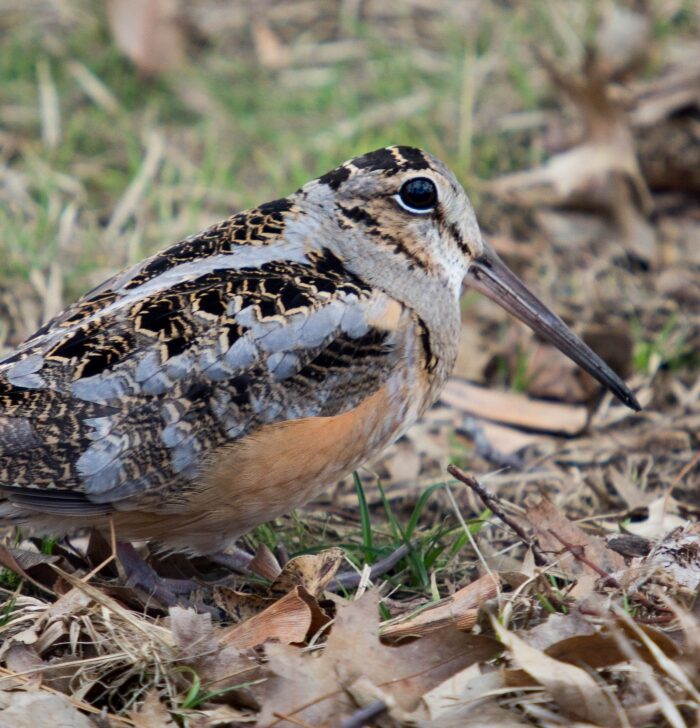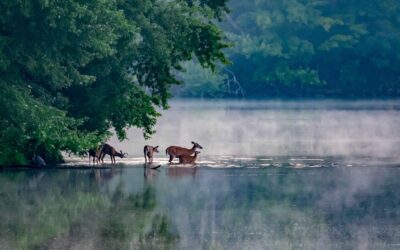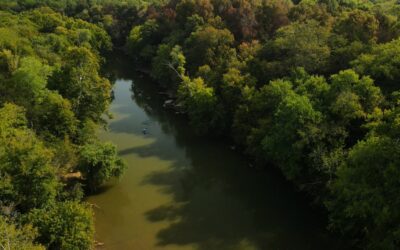Along with the calls of spring peepers, nothing says spring is on the way more than the courtship of American woodcocks. Not familiar with these field- and forest-dwelling shorebirds? You’re not alone.
Sometimes called timberdoodles, woodcocks are remarkably well camouflaged to blend in with leaf litter and are nearly impossible to find during the day. They perform their display flights at dusk and dawn in open fields in late winter and early spring. Listen for males as they produce their distinctive peent call on the ground. After calling for a short time they fly up in a spiral, getting several hundred feet into the air before dropping down in a zig-zag pattern, their wings making a whistling sound as they come in for a landing.
Like many species who depend on grasslands, their numbers are declining as suitable habitat disappears.
Homeowners fortunate enough to have larger plots of land can look into planting native grasses, which would support woodcocks and other native species. As a huge added benefit, many native grasses are better at sequestering carbon than trees.




